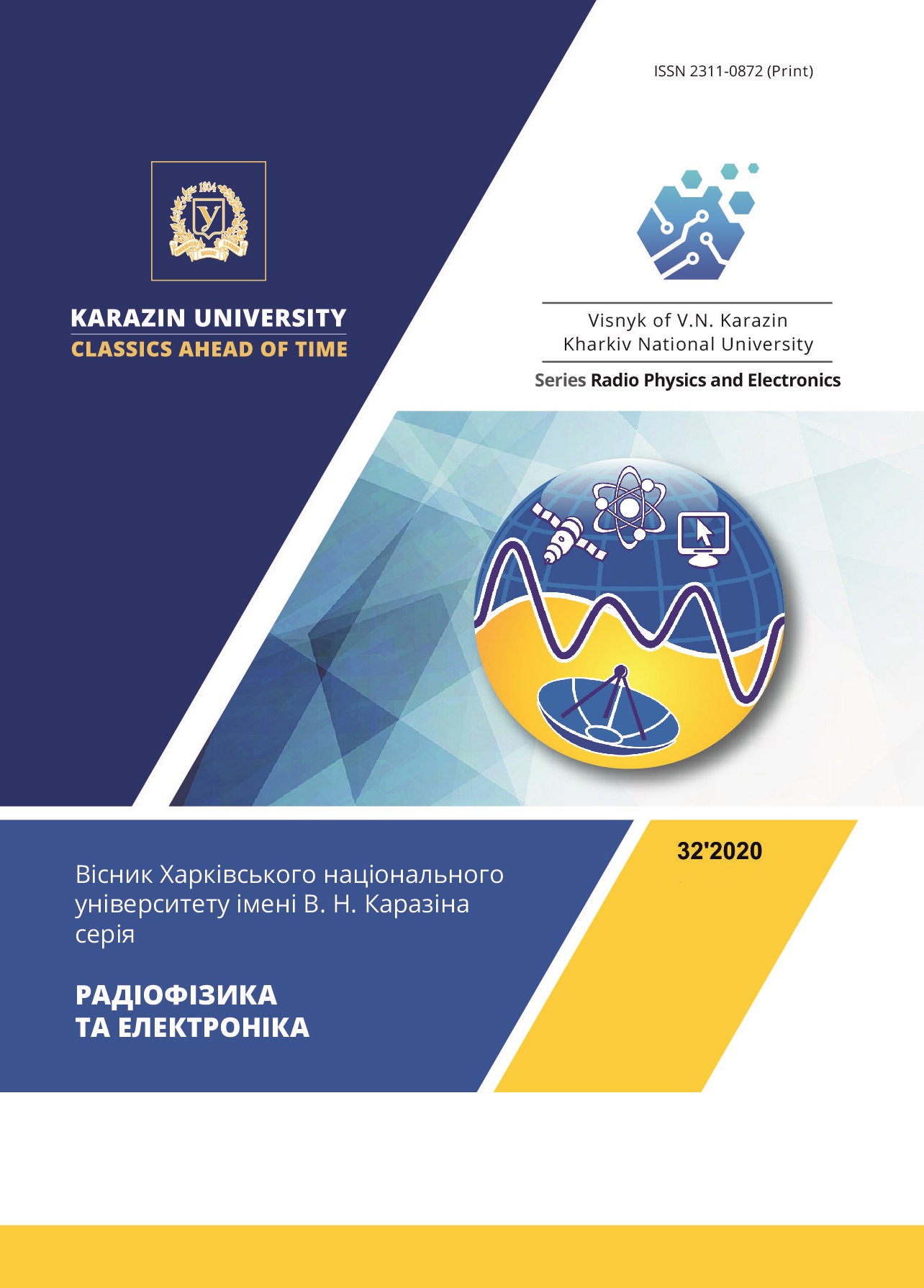Comparison of subsurface object recognition by artificial neural networks and correlation method
Abstract
Background: The problem of searching for subsurface objects has a particular interest for construction, archeology and humanitarian demining. Detection of underground mines with the help of remote sensing devices replaces the traditional procedure of finding explosive objects, as it excludes the presence of a human in the area of possible damage during a charge explosion.
Objectives: The aim of the work is to improve the recognition of three-dimensional objects and demonstrate the benefits of using a more informative data set obtained by a special antenna system with four receiving antennas. In addition, it is necessary to compare the effectiveness of artificial intelligence and the method of cross-correlation for recognition by subsurface radar, taking into account the additive noise of different levels present in practice.
Materials and methods: The electrodynamic problem was solved by the finite difference time domain (FDTD) method. An artificial neural network (ANN) is trained on ideal signals to detect the features of the field that will be found in noisy data to determine to the position of the object. Cross-correlation also involves the use of an array of ideal signals, which will be correlated with noisy real signals.
Results: The optimal and effective ANN structure for work with the received signals is created. It was tested for noise immunity. The recognition problem was also solved by the classical method of cross-correlation, and the influence of noise of different levels on its responses was studied. In addition, a comparison of the efficiency of their recognition using 1 and 4 sensors was made.
Conclusions: For subsurface survey problems, a deep neural networks with at least three hidden layers of neurons should be used. This is due to the complexity and multidimensionality of the processes taking place in the surveyed space. It has been shown that artificial intelligence and cross-correlation techniques perform the object recognition well, and it is difficult to identify the best among them. Both approaches showed good noise immunity. The use of a larger data set of four receivers has a positive effect on the recognition results.
Downloads
References
Taylor JD. Ultrawidebandradar: applications and design. Boca Raton, CRC Press, NewYork, London; 2012.
Immoreev IJ. Main capabilities and fieatures of ultra wideband (UWB) radars. Radio Physics and Radio Astronomy. 2002;7(4):339-344.
Daniels JD. Ground penetrating radar. 2nd ed. London: IEEE, 2004.
Harmuth H. Nonsinusoidal Waves for Radar and Radio Communications. Academic Press, New York; 1981.
Pochanin G, Masalov S, Pochanina I, Capineri L, Falorni P, Bechtel T. Modern Trends in Development and Application of the UWB Radar Systems. In Proc. 8th International Conference on Ultrawideband and Ultrashort Impulse Signals; 5-11 September 2016; Odessa, Ukraine; p. 7-11.
Pochanin GP, Ruban VP, Kholod PV, Shuba OA, Pochanina IYe, Batrakova AG, Urdzik SN, Batrakov DO, Golovin, DV. Advances in ground penetrating radars for road surveying. In Proc. 7th International Conference on Ultrawideband and Ultrashort Impulse Signals; 15-19 September 2014; Kharkiv, Ukraine; p. 13-18.
Sytnik O, Masalov S, Kholod P, Pochanin G, Ruban V. UWB Technology for Detecting Alive People behind Optically Opaque Obstacles. In Proc. 9th International Conference on Ultrawideband and Ultrashort Impulse Signals (UWBUSIS–2018); 4-7 September 2018; Odessa, Ukraine; p. 110-114.
Haykin S, Neural networks: complete course, 2nd ed., Rev. : Translate from English. - M.: LLC "I.D. Williams ", 2006. -1104s
Callan R, Basic concepts of neural networks, Per. from English. - M.: LLC "I.D. Williams ", 2001.
Shirokorad DV, Dumin AN, Dumina OA, Katrich VA Analysis of impulse fields reflected from a layered medium with losses using an artificial neural network. Visnyk of V.N. Karazin Kharkiv National University, series “Radio Physics and Electronics”. 2009; 15(883):35–40.
Shirokorad DV, Dumin AN, Dumina OA, Katrich VA. Analysis of Pulsed Fields Reflected from a Layered Lossy Medium Using Artificial Neural Network. Telecommunications and radio engineering. 2011; 70(10):873–881.
Drobakhin O, Doronin A. Estimation of thickness of subsurface air layer by neuron network technology application to reflected microwave signal. In Proc. XII Int. Conf. on MMET; 2008; Odessa, Ukraine. p. 150-152.
Shyrokorad D, Dumin O, Dumina O, Katrich V. Analysis of transient fields reflected from model of human body surface using convolutional neural network. In Proc. IEEE International Conference on Mathematical Methods in Electromagnetic Theory (MMET); 2010; Kyiv, Ukraine.
Shyrokorad D, Dumin O, Dumina O, Katrich V, Chebotarev V. Approximating properties of artificial neural network in time domain for the analysis of electromagnetico fields reflected from model of human body surface. In Proc. of International Symposium on Physics and Engineering of Microwaves, Millimeter, and Submillimeter Waves (MSMW-2010); June 21–26 2010; Kharkov, Ukraine; G-8.
El-Bakry HM, Zhao Q. A modified frequency domain cross correlation implemented in MATLAB for fast sub-image detection using neural networks. In Proceedings 2005 IEEE International Joint Conference on Neural Networks; 31 July-4 August 2005; Montreal, Que, Canada.
Dumіn OM, Plahtіj VA, Prishhenko OA, Shirokorad DV. Determination of objects from the surface of the earth with over-wide-area radio-introscopy behind the addition of piece neuronal fences. Visnyk of V.N. Karazin Kharkiv National University, series “Radio Physics and Electronics”. 2018; 28:24-29.
Ogurtsova T, Ruban V, Pojedinchuk A, Pochanin O, Pochanin G, Capineri L, Falorni P, Borgioli G, Bechtel T, Crawford F. Criteria for Selecting Object Coordinates at Probing by the Impulse UWB GPR with the “1Tx + 4Rx” Antenna System. In Proc. 9th International Conference on Ultrawideband and Ultrashort Impulse Signals; September 4–7, 2018; Odessa, Ukraine; p. 161-164.
Dumіn OM, Plahtіj VA, Prishhenko OA, Shirokorad DV. The method of discrete tomography in the process of sampling of the data of the over-wide-area under-superficial radio-locating with a piece of neural mesh. Visnyk of V.N. Karazin Kharkiv National University, series “Radio Physics and Electronics”. 2018;29:17-26.
Bracewell R. Pentagram Notation for Cross Correlation. The Fourier Transform and Its Applications, New York: McGraw-Hill, 1965. 46 p.




